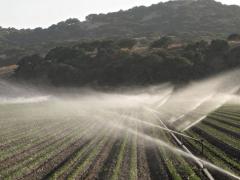Phosphorus for Sustainable Development Goal target of doubling smallholder productivity
The supply of phosphorous is crucial to food security. Future phosphorous management will therefore play an important role in achieving Sustainable Development Goal 2 (SDG2, zero hunger). However, in many tropical countries, phosphorous fixing soils and very low historical phosphorous input limit the uptake of phosphorous in crops and thus crop yields.
Achieving the zero hunger SDG2 is critical as the world population is projected to grow from 7.3 in 2015 to perhaps more than 10 billion inhabitants in 2050. To achieve SDG2 target 2.3 of doubling productivity in smallholder farms in 2030 in five world regions where smallholder farms dominate, 39% more P application (126 Tg, almost 7 times the global current annual P fertilizer use) is required in the period 2015-2030. Achieving the SDG 2.3 target thus requires a strong increase in P input, while protecting soils and waterways from excessive P runoff.
Phosphorous fixation is a serious obstacle
Future crop yields depend on the availability of soil P for plant uptake, i.e., on the concentration of phosphate ions in the soil solution and the soil’s ability to replenish phosphate withdrawn by plants. This ability is limited in weathered tropical soils that chemically fix P. P fixation is a serious obstacle in many developing countries that are in the early phases of agricultural development with minimal P application rates, mining of soil P, and low crop yields. However, P fixation can be overcome by surplus P applications to quench large part of the soil P fixation and sorption capacity and build up pools of legacy P, as was demonstrated at a large scale in Brazil.
Authors
Specifications
- Publication title
- Phosphorus for Sustainable Development Goal target of doubling smallholder productivity
- Publication date
- 22 November 2021
- Publication type
- Article
- Page count
- 7
- Publication language
- English
- Magazine
- Nature Sustainability
- Issue
- 2021
- Product number
- 4830




